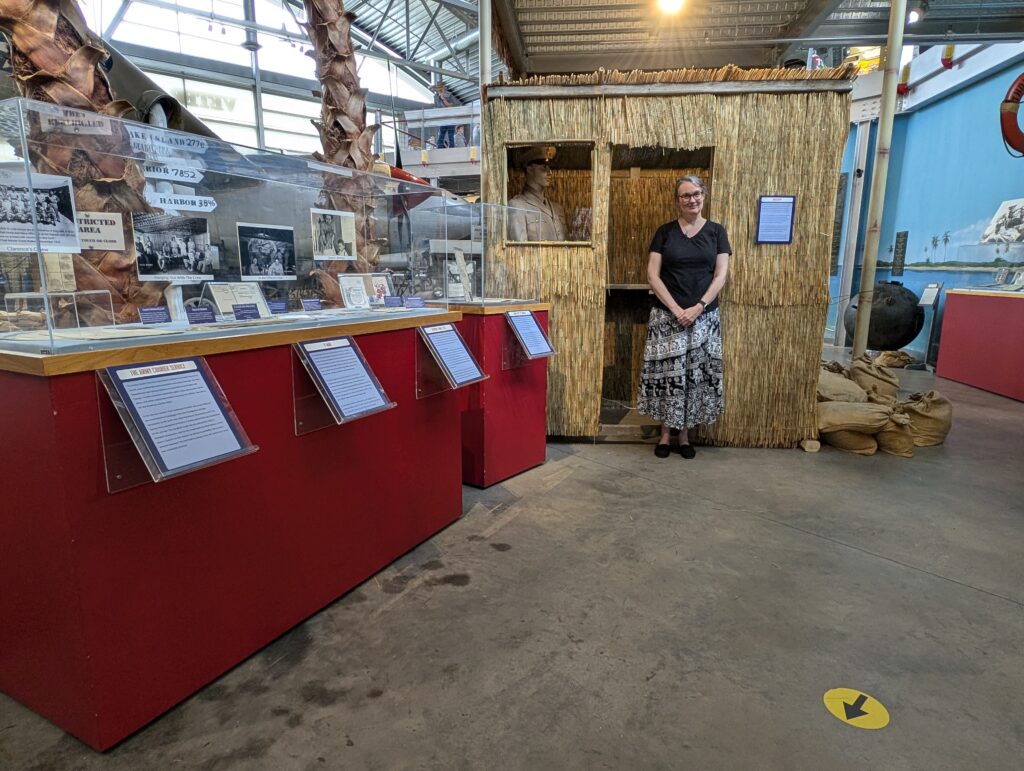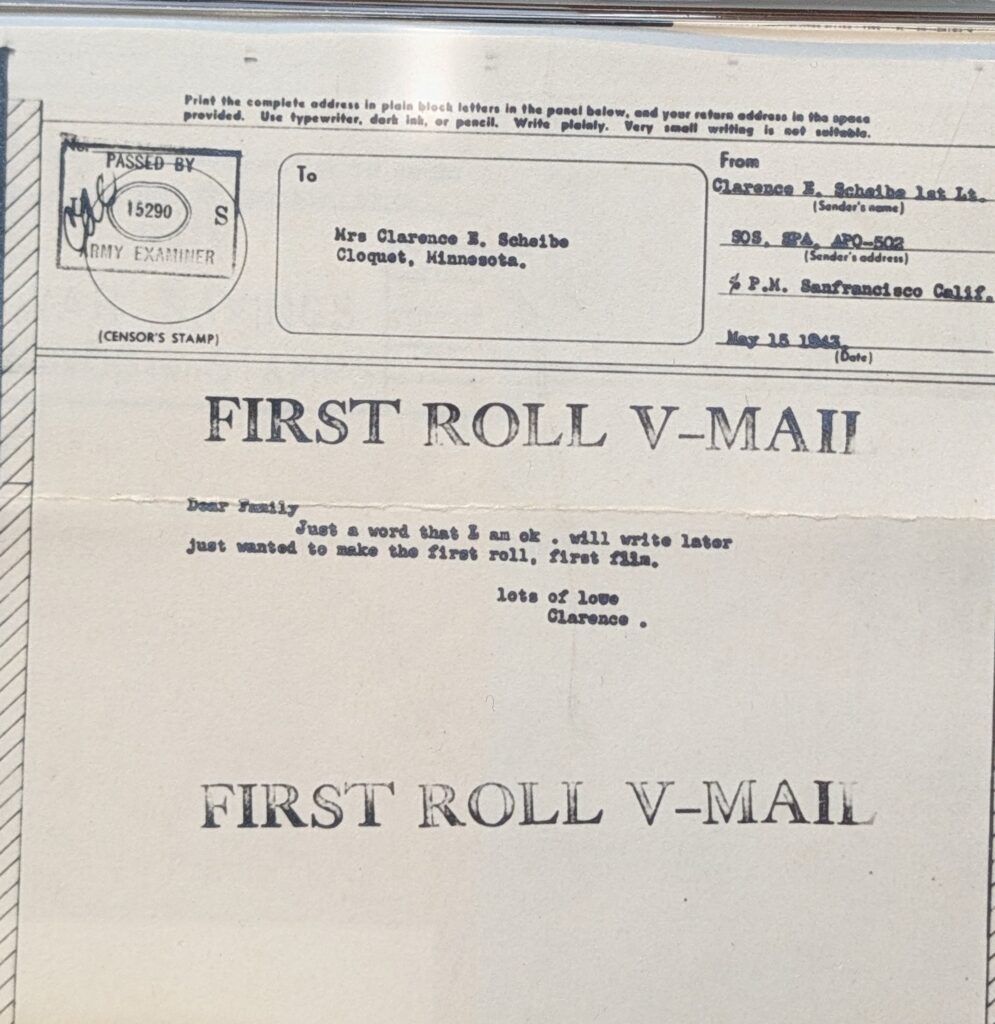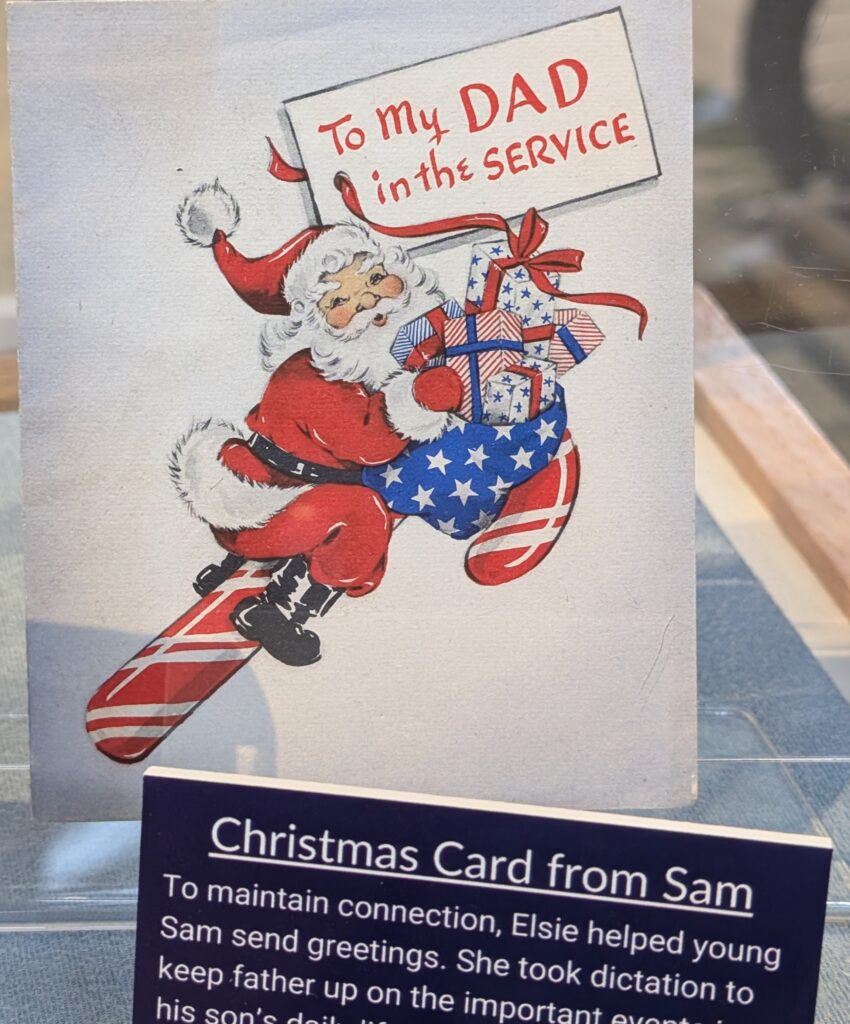
Special Guest Blog post written by 2024 Summer Intern Cathy Taylor.
When I started as an intern at The Richard I. Bong Museum for the summer, I wasn’t quite sure what my job would be like, what I would be doing.
Within the first couple of weeks I met the daughter of Captain Clarence Scheibe, who brought with her a filebox of papers from his military career. She told me the story of her father, how he had been Postmaster in Cloquet and ended up overseeing the entire Army postal system of the WWII wartime Pacific theater. She told of how he was able to smooth diplomatic ties between the Americans and the French leader of New Caledonia, who would later go on to play a pivotal role in the French resistance. She told of his getting to know Captain Martin Clemens, who raised the alarm that the Japanese were building a runway on Guadalcanal. Only a few days after that horrific battle ended and the Japanese retreated, her father went to the island to get the post office up and running, and the sights he saw there he would never discuss in detail, except to say how awful it was. When V-Mail was developed, shrinking full size letters down to just 4-¼ x 5” for wartime delivery, the first message on the first roll was sent to his wife.

I went to look through the papers as well as other objects that Margaret Scheibe had dropped off at the museum over the years, to sort through the mundane to find the things that would let Clarence Scheibe shine through. He had saved a lot of everyday type military orders and reports, but now and then something in the morass would catch my eye. Also preserved were letters and cards, most sent from him to his wife on the other side of the world. What came out of all this paper was a man who had a strong sense of duty to his country and dedication to the postal service, who was also far from the family he loved.
I developed the exhibit with this spectrum in mind. The story starts with official Army Captain Scheibe. He had the dangerous job of being an Army Postal Courier, top secret documents handcuffed to his wrist in a case that could only be opened with a key. In this role he was often under threat of being captured by the enemy. But he was also Chief Postal Officer, and this role was no less important than courier, for the morale of the troops in the Pacific relied on getting messages from home. He and his crew made sure that the mail got around the remote islands. Also he was a husband and a father. Through the letters he sent to Elsie, his wife, and his son Sam, the caring family man shows through. One of the things I found touching was his list of instructions to Elsie as she headed into her first winter without him being there, wanting to make sure everything was right to keep his little family warm and safe. He was going to be in the tropical climate of the Southern hemisphere, however he longed so much to be home and caring for his family. Despite the hardship of being apart, he wrote to her, “but what I am doing now will always help both of us the rest of our lives.” It was through the mail that they were able to keep communication flowing, just like every other soldier and loved one waiting to be reunited. It was my pleasure to be able to share just a little bit of this remarkable man’s life.
